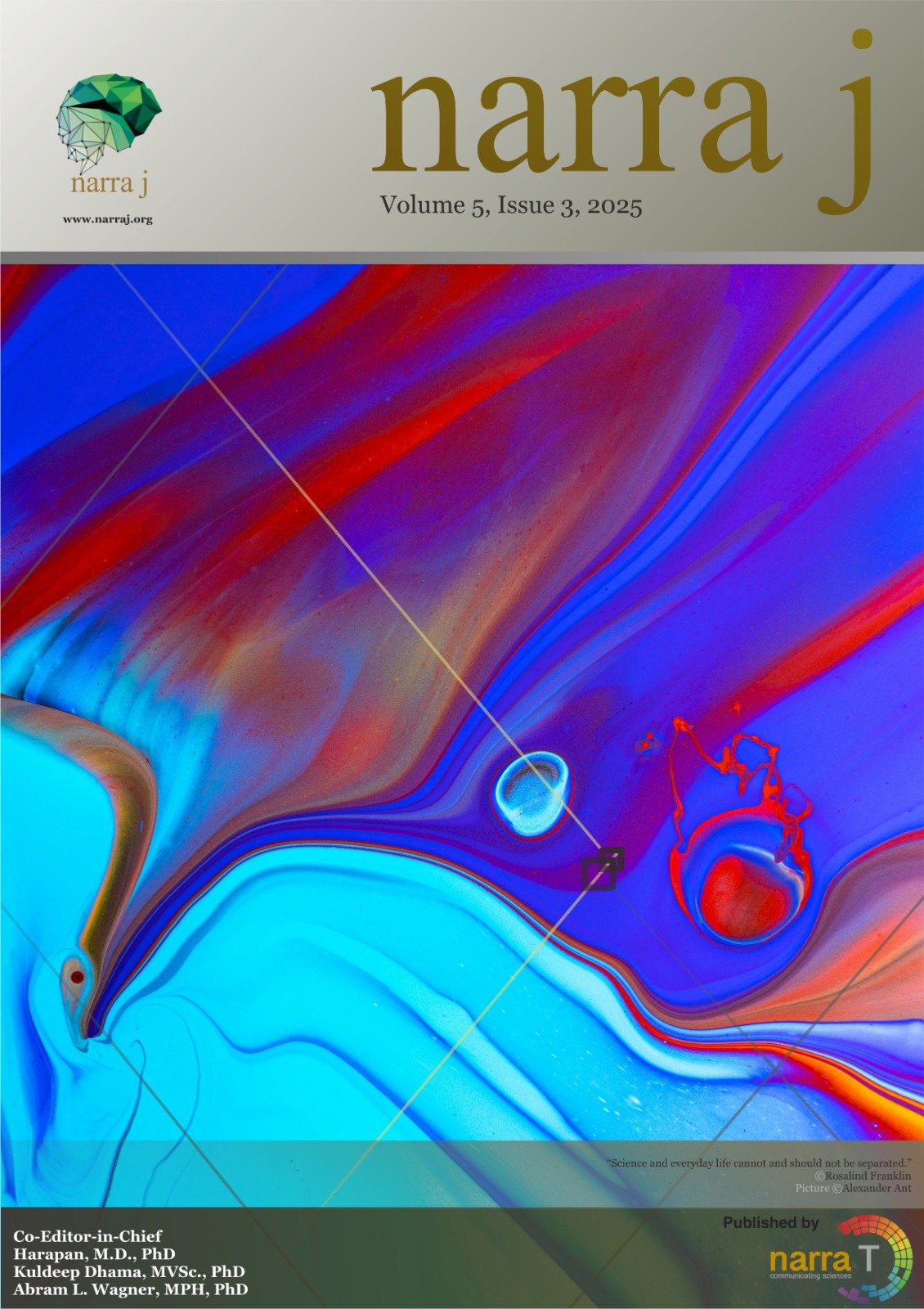Exploring the potential of Holothuria atra extract in modulating fasting triglyceride index and obesity: In silico, in vitro and in vivo studies
DOI:
https://doi.org/10.52225/narra.v5i3.2839Keywords:
Obesity, triglyceride index, Holothuria atra, sea cucumber extract, lipid metabolismAbstract
Obesity remains a major global health challenge and is strongly associated with metabolic disorders, particularly cardiovascular disease. This has fueled growing interest in natural interventions that regulate lipid metabolism as potential strategies to mitigate associated risks. Among these, Holothuria atra has emerged as a candidate due to its diverse bioactive compounds, though its mechanisms of action and therapeutic efficacy remain inadequately characterized. The aim of this study was to evaluate the combined effects of H. atra extract (HAE) and exercise on metabolic regulation, with the goal of determining whether their synergistic use enhances obesity management by targeting multiple metabolic pathways. Specimens of H. atra were collected from Tablolong Beach, Indonesia, and ethanol extracts were prepared. An in-silico analysis was performed to assess drug-likeness, quantitative structure-activity relationship (QSAR) properties, and network pharmacology. In vitro test using human umbilical cord-derived mesenchymal stem cells (hUC-MSCs) underwent adipogenic differentiation with or without HAE treatment. This study used male Sprague-Dawley rats that were fed either a control or high-fat diet and further subdivided into groups receiving extract supplementation, swimming exercise, or a combination of both for six weeks. Liquid chromatography-mass spectrometry (LC-MS) analysis identified 6-gingerol and sarcostin as principal bioactive compounds, both of which fulfilled drug-likeness criteria. In silico analyses implicated peroxisome proliferator-activated receptor gamma (PPAR-γ) signaling as a major molecular target. In vitro tests found that HAE attenuated adipogenic differentiation of hUC-MSCs. Both HAE and exercise significantly reduced triglycerides, glucose, and the triglyceride–glucose index in rats fed a high-fat diet. The combination of HAE and exercise produced the greatest improvements, with significant reductions in glucose (p<0.01) , triglycerides (p<0.001), and the triglyceride–glucose index (p<0.001) compared to the high-fat diet control group. Collectively, these findings suggest that HAE, particularly when combined with regular exercise, improves lipid metabolism and may serve as a promising complementary strategy for obesity management.
Downloads
Downloads
How to Cite
Issue
Section
Citations
License
Copyright (c) 2025 Assyu’ara Al’asyi, Irena Ujianti, Rara Nadika, Zahirah Zahirah, Bimo J. Faizin, Devana A. Afifah, Randhiva Farhan, Salsabila P. Rahmadina, Raisya ZN. Lubis, Sakinah Ghaisani, Kiflan Arkananta, Bety S. Lakshmi, Mulyoto Pangestu

This work is licensed under a Creative Commons Attribution-NonCommercial 4.0 International License.



